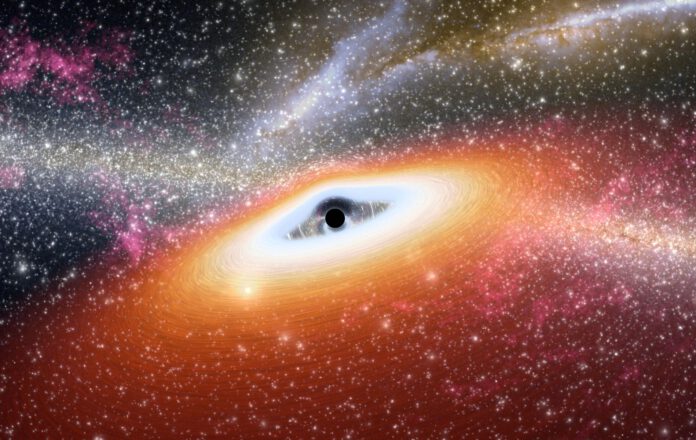
According to our current understanding of the origin and evolution of black holes, this particular discovery seemingly refutes the norm.
This revelation can be found in the journal Nature. The study focuses on a black hole discovered via the James Webb Space Telescope. This black hole hails from the period just after the big bang; astronomers see it as it appeared merely 400 million years post the universe’s creation. As a result, this marks the black hole as the oldest one astronomers have detected to date.
The Puzzle
What’s intriguing is the heavy mass of the black hole that supposedly formed shortly after the big bang: it’s several million times heftier than our Sun. This fact poses a conundrum for astronomers. Prevailing theories suggest that such supermassive black holes – comparable to those we find in the center of the Milky Way today – require billions of years to accrue such mass. Clearly, the supermassive black hole discovered in the young universe didn’t have that much time. Researcher Roberto Maiolina concludes, “Thus, we need to consider other ways that supermassive black holes can form.”
The discovery of this supermassive black hole in the early universe calls upon scientists to reconsider how such black holes can originate or evolve. Perhaps some supermassive black holes are larger at their ‘birth’ than previously thought. Alternatively, certain supermassive black holes might grow at a faster clip than researchers anticipated.
The Ravenous Black Hole
It’s certain that the black hole currently under investigation is insatiable. Research has confirmed that it swallows matter at a swifter pace than black holes did in later times.
Initially, this voracious appetite allows the black hole to grow. However, over the long term, this craving for ‘more’ could be this black hole’s downfall, as the researchers observe. If the black hole consumes too much gas, it produces potent ‘winds’ – affecting a flow of radiation and charged particles – that deflect gas away from the black hole. As a result, the black hole essentially repels its own ‘food,’ slowly starving itself. Furthermore, this process significantly impacts the related galaxy. The forceful ‘winds’ generated by the black hole halt star formation, reducing the emergence of new stars, greying the galaxy, and inducing a slow decline.
Further Research
Although it has been determined that the black hole discovered in the early universe is actively and rapidly consuming, this alone fails to explain how the black hole became so massive in such a short time span. More research is needed to decipher how a supermassive black hole could exist so early in the universe’s history. Maiolino anticipates that the James Webb telescope will be of significant assistance. He argues that this sharp and sensitive telescope marks the advent of a new era in astronomy. “Before Webb’s launch, I thought the universe beyond the field of view of the Hubble Space Telescope might not be that fascinating. But this is clearly not the case.”
Maiolino believes that the James Webb telescope is sensitive enough to spot even older black holes in the coming months and years. That is, black holes that formed even close to the big bang. The hope is that James Webb may also encounter in-the-making (or growing) supermassive black holes, leading to improved understanding of how certain black holes can incredibly rapidly become supermassive.











